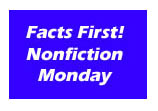
This review was written for my children’s literature class, so it addresses some concerns from a more professional perspective than many of my earlier reviews have.
Colman, P. (1997). Corpses, coffins, and crypts: A history of burial. New York: Henry Holt and Company.
Corpses, Coffins, and Crypts demystifies a process which many children encounter for the first time in late elementary school: what happens to the body after a person dies. Penny Colman is an award-winning author of children’s non-fiction; while she is not an expert on burial practices, she is an expert on researching and presenting information.
This book, which will have a natural pull for spooky kids such as myself, is very straightforward in its approach. Colman first defines death and explains what exactly happens upon death. She then discusses various possibilities for what happens to a corpse, including medical uses, embalming, and creation. Next she discusses different containment options: urns, coffins, crypts, and mausoleums. She goes on to describe burial sites and celebrations, finishing with a discussion of death as portrayed in the arts and everyday life.
The book’s intended audience is readers age 9 - 12, although School Library Journal recommends it for grades 6 and up. I think it would appeal to an advanced 4th or 5th grader. The text is very clear. Colman frames her discussions of history and science with stories of her own experiences with death and those of her friends and acquaintances. This keeps the subject from being sterile, but does not sentimentalize. Colman draws on many disciplines, including anthropology and archaeology. Her information comes from a variety of sources, some as old as the Roman historian Herodotus and others as current as her own interviews with morticians. Images include photographs of burial sites and reproductions of paintings and engravings dealing with death. All of the images are in black and white. In most non-fiction texts I would consider this a detractor, but here I think the monochrome images suit the book’s somber subject matter.
The text provides both finding aids and additional material. A table of contents, chronology of burial customs, glossary, bibliography, and index are provided. Colman also includes a gazetteer of burial sites of famous people, a collection of interesting epitaphs, and an explanation of the symbolism of images commonly carved on gravestones.
Corpses, Coffins, and Crypts illuminates the burial process and illustrates how it is a common part of every person’s life. It is an interesting, warm, and respectful examination of customs across time. It may not appeal to a broad audience of middle grade readers, but it will interest and entertain some and comfort others.